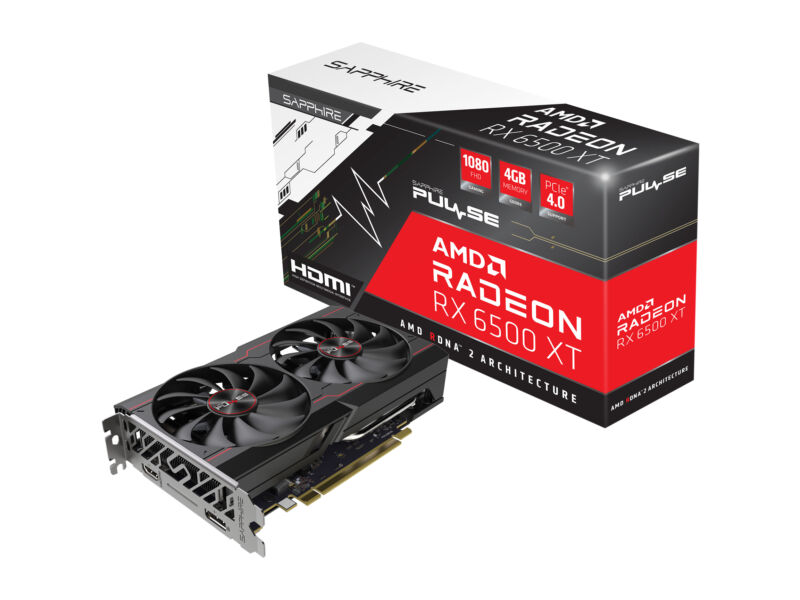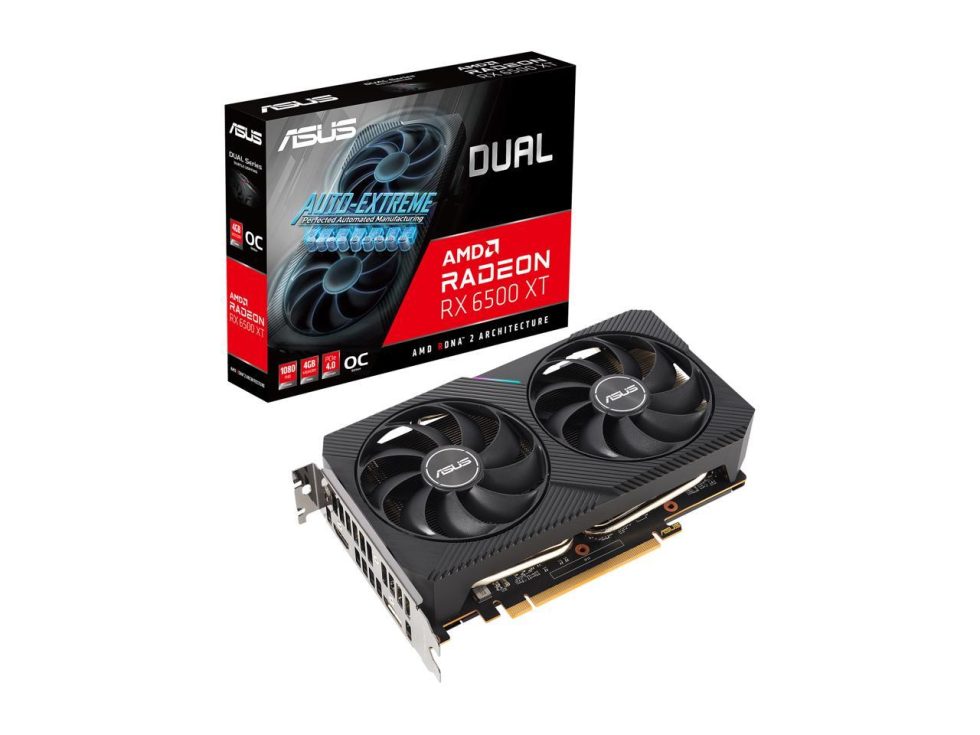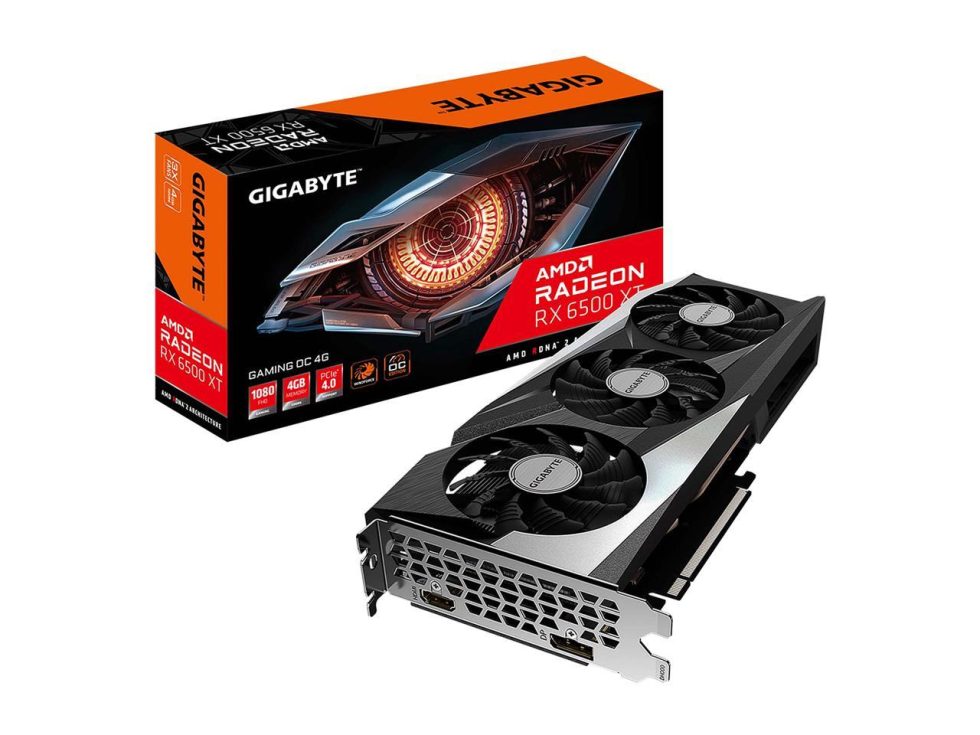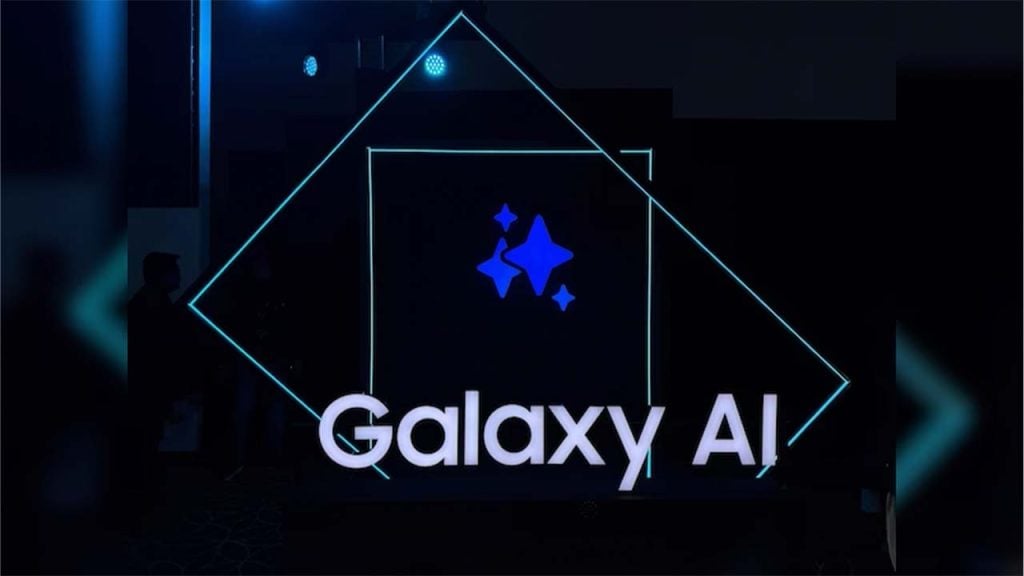
When AMD announced its budget-friendly RX 6500 XT graphics card at CES early this month, the company suggested that the product had been designed with limitations that would make it unappealing to the cryptocurrency miners who have been exacerbating the ongoing GPU shortage for over a year now. But now that reviews of the card have started to hit, it's clear that its gaming performance is the collateral damage of those limitations.
Reviews from Tom's Hardware, PCGamer, TechSpot, Gamers Nexus, and a litany of other PC gaming YouTube channels are unanimous: the RX 6500 XT is frequently outperformed by previous-generation graphics cards, and it comes with other caveats beyond performance that limit its appeal even further. (Ars hasn't been provided with a review unit.)
The core of the problem is a 64-bit memory interface that limits the amount of memory bandwidth the card has to work with. Plus, the card has only 4GB of RAM, which is beginning to be a limiting factor in modern games, especially at resolutions above 1080p. Many tests saw the RX 6500 XT outperformed by the 8GB variant of the RX 5500 XT, which launched at the tail end of 2019 for the same $199 (and you could actually find and buy it for that price).
The hardware limitations also make the GPU's support for hardware-accelerated ray-tracing nearly useless. Tom's Hardware says that in the titles that are playable at all with ray-tracing enabled, the settings have to be turned down low enough that games don't actually look that much better. The RX 6000-series' ray-tracing performance lags behind the Nvidia RTX 3000 series across the lineup, but it's especially disappointing here.

The card's four-lane PCI Express 4.0 interface also poses a problem. When it has a PCIe 4.0 connection to work with, the RX 6500 XT seems fine, and even high-end cards don't generally need all the bandwidth that the typical 16-lane connection provides. But it causes problems for PCs that use PCI Express 3.0; TechSpot's review found that using a PCIe 3.0 connection with the RX 6500 XT knocked off 10–15 percent of the card's already lackluster performance. And PCIe 3.0 systems aren't ancient history: Intel's 10th-generation Core chips, any Ryzen processors still running in a 300- or 400-series motherboard, and the Ryzen 5000G processors with integrated graphics all use PCI Express 3.0 and are still being sold at most retailers. These are exactly the kinds of older and cheaper PCs that budget-minded gamers are more likely to be using, limiting the RX 6500 XT's appeal among what ought to be its target audience.
Even for people who don't play games, the RX 6500 XT cuts some corners that make it less useful. The GPU only supports a total of two displays, down from the more typical four. The GPU's video encoding and decoding capabilities have also been cut down—the card can't decode AV1 video streams, which means it won't be able to handle 4K video streams from a growing number of streaming services (AV1 support is one issue at the heart of the recent Roku-Google dust-up). And the card can't encode either H.264 or H.265 video streams, features that help reduce the load on your CPU if you're streaming live video.

By way of explanation, an AMD staffer has indicated that the Navi 24 GPU at the heart of the RX 6500 XT was intended for use in laptops, where lower amounts of VRAM, 64-bit memory interfaces, and other limits are still common; these laptops also almost always include an Intel- or AMD-integrated GPU that could handle the missing video encoding and decoding capabilities. But Navi 24 was retooled for release on desktops, where its limitations have become more apparent.
Unfortunately, the realities of today's GPU market are such that an RX 6500 XT at its $200 list price could still be a decent buy for someone on a budget or someone who can live with mediocre performance until the GPU market cools down (whenever that is—the GPU makers themselves have given incorrect estimates about the issue so many times that it's clear no one actually knows for sure). Nvidia's years-old, low-end GeForce GTX 1650 goes for around $300 when you can find it, and the RX 6500 XT beats it by a fair margin most of the time.
It is, of course, currently impossible to find an RX 6500 XT at its retail price unless you live near a Micro Center or some other brick-and-mortar store that doesn't sell GPUs online. So it goes.
Article From & Read More ( The reviews are in: AMD’s mining-averse RX 6500 XT also isn’t great at gaming - Ars Technica )https://ift.tt/3qMZA3v
Technology

No comments:
Post a Comment